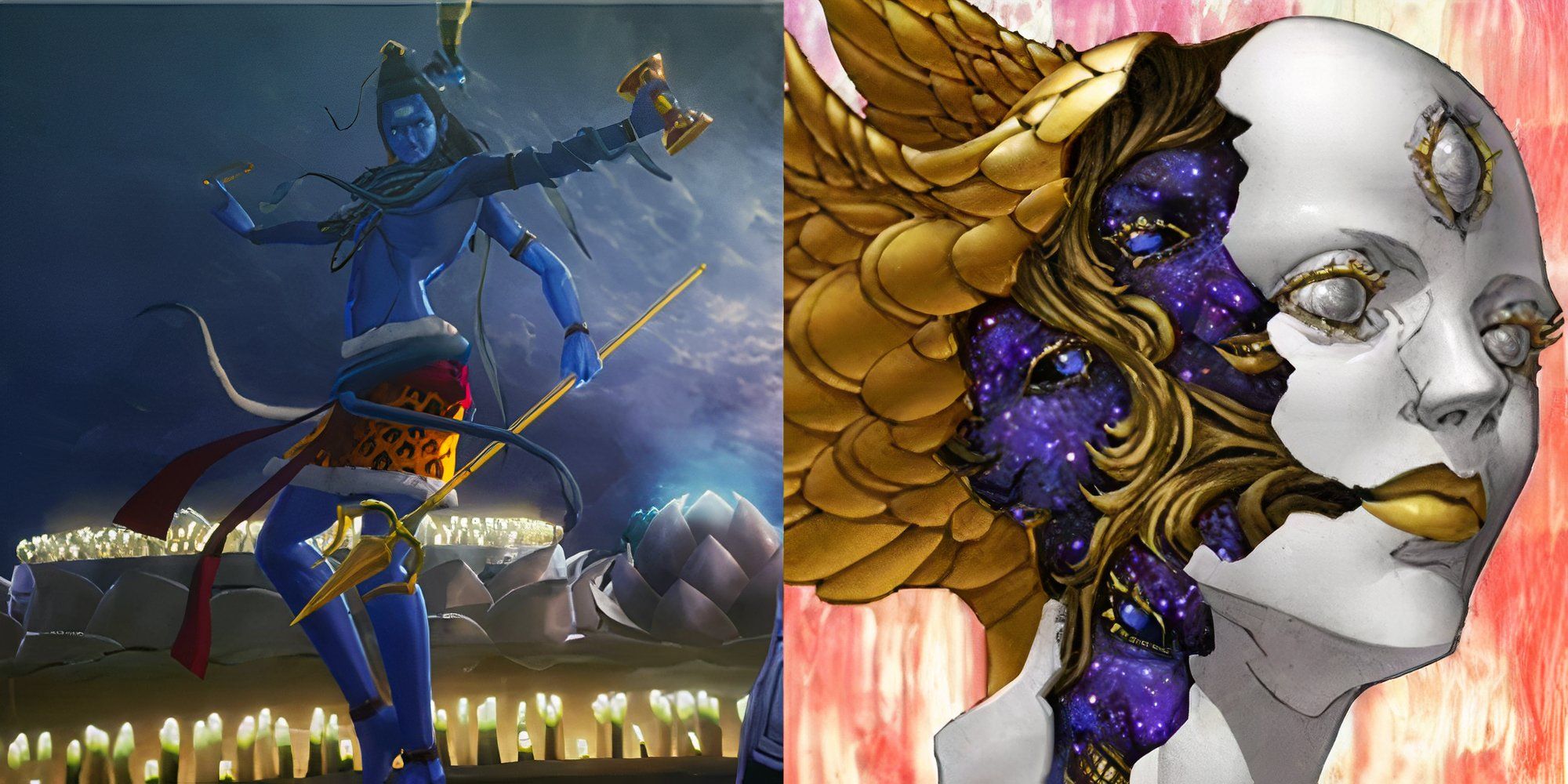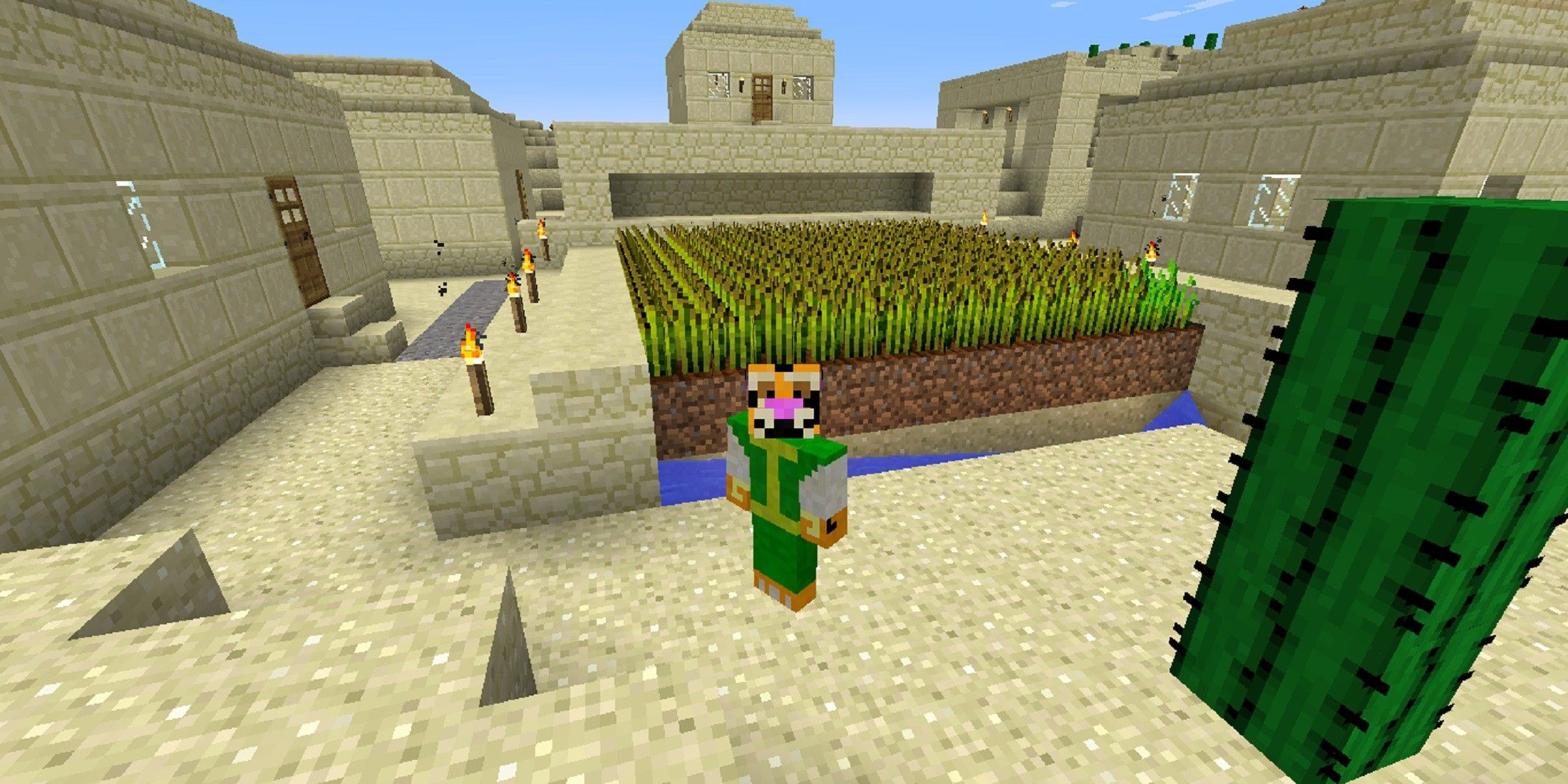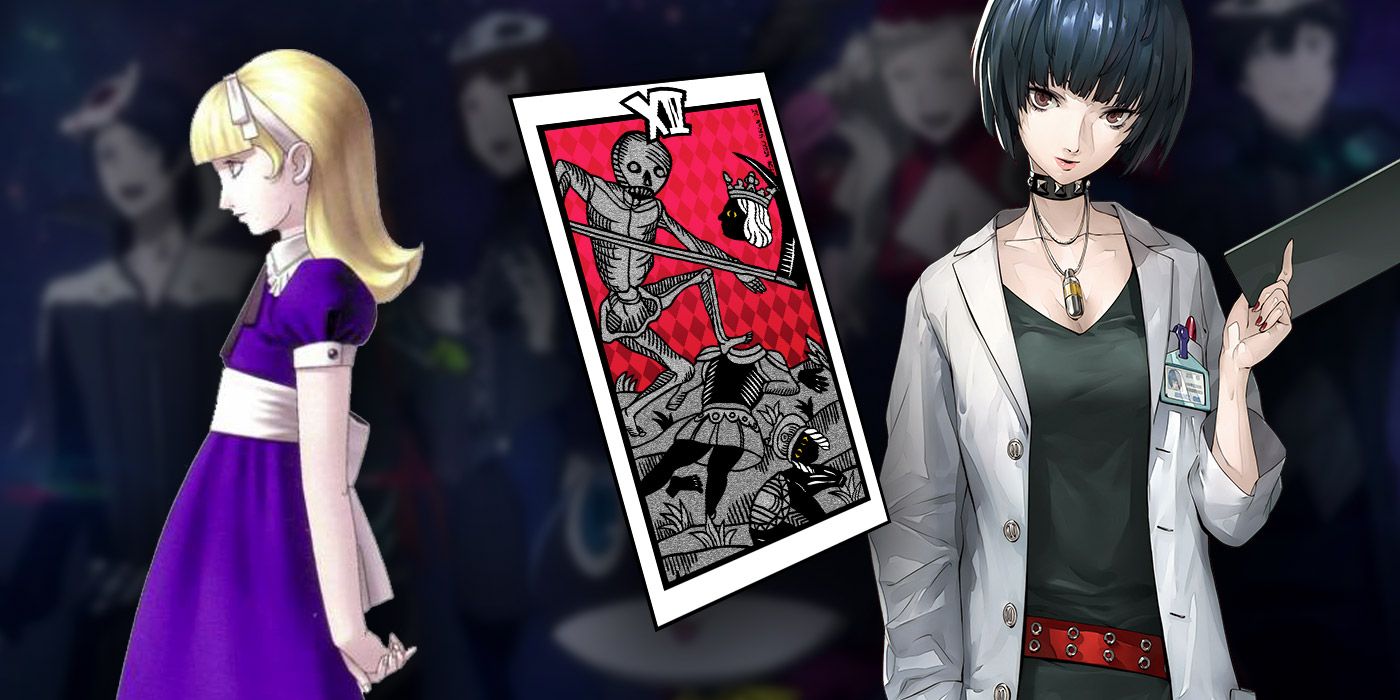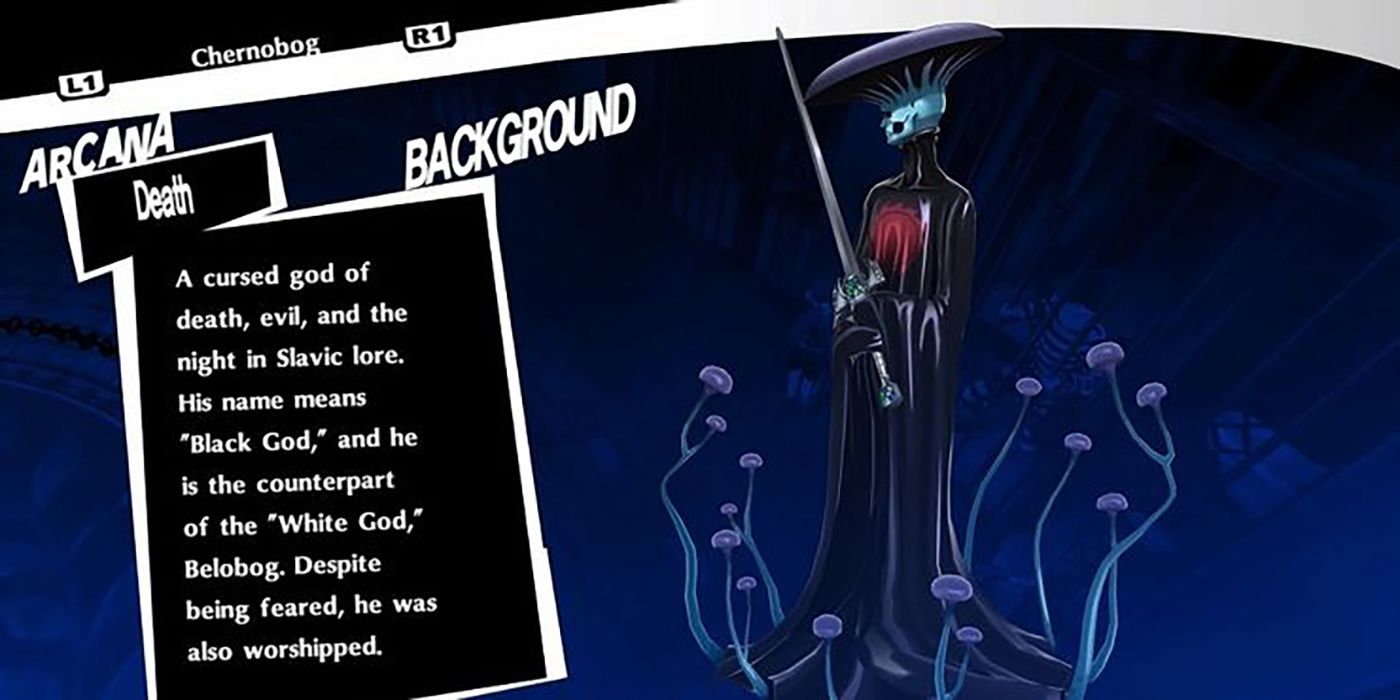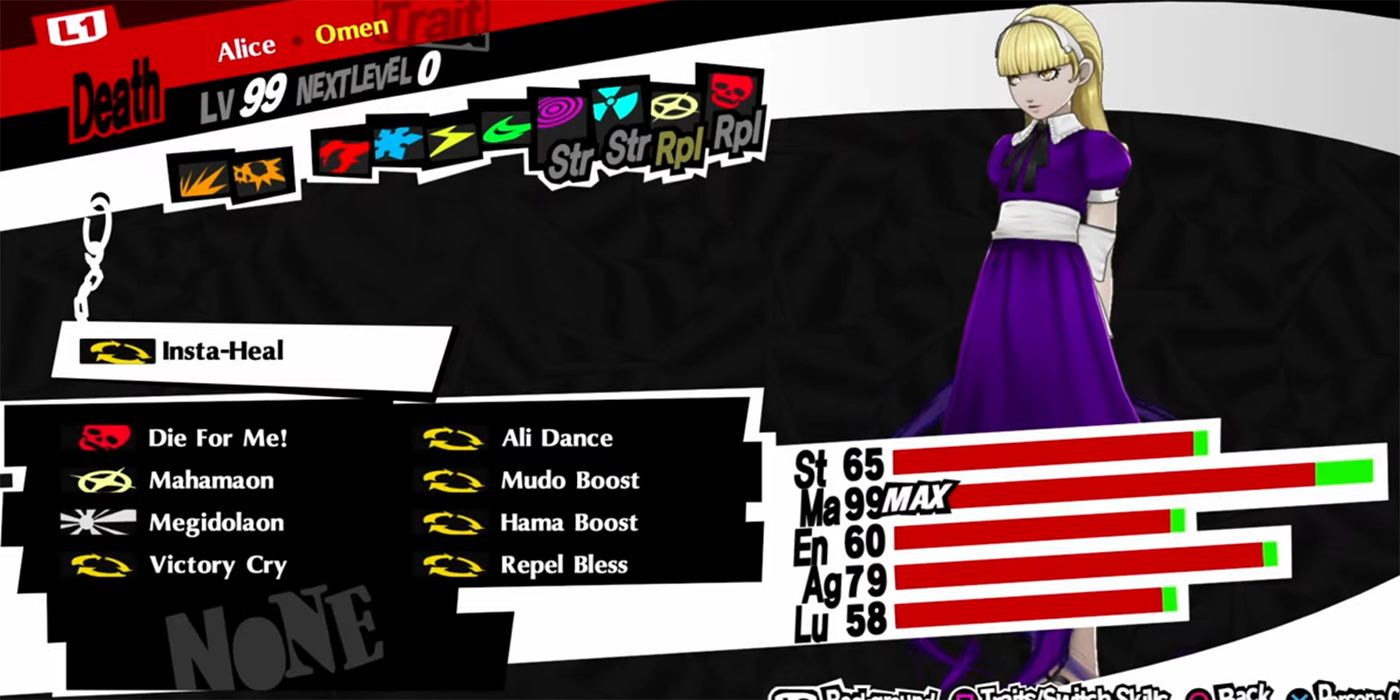Most people having their fortune told would be displeased to find a major arcana of Death come up in a tarot spread. Death rarely signifies loss of life in the tarot, rather referring to a dramatic life change — the end of one chapter and the beginning of another. The Death arcana also marks a turning point, as the preceding major arcana are referred to as "minor mysteries," represented by human figures. The tarot cards that follow Death are more abstract "Major Mysteries," referring to concepts and non-human symbols. Persona 5 understands this well, though the mythical entities representing the arcana are undeniably darker than those found in most other arcana.
Dr. Tae Takemi, Persona 5's Death confidant, deals with mortal stakes frequently, and she is haunted by a patient gripped with a deadly illness. After being accused of malpractice, she runs a small clinic in Yongyen Jaya, effectively exiling herself from the broader medical community. Like many of the major arcana, such as Fortune, the reversed values of death refer to stagnation and atrophy, which could refer to Tae's career and state of mind prior to her dealings with Joker, which catalyzes the rebirth of her reputation, career, and outlook.
Death personas excel at dishing out curse damage, and often have a weakness against bless damage. While the stories behind these entities are generally focused on death, darkness, and outright evil, their lore is surprisingly tamer than the gruesome folklore behind members of the Hanged Man arcana.
Pisaca - The Corpse Devourer
According to Hindu-Buddhist folklore, pisaca are demons that feast on dead flesh and corpses. Persona 5's lore blurb for the creature implies that they are also a kind of parasite, entering living humans through their mouths, and causing harm from within. This may be a reference to Picasa's supposed ability to possess people, altering their thoughts to the point of insanity. The game also describes the creature as a harbinger of death, stating that those who witness it are doomed to die within nine months. Folklore states that they have several other powers, including the ability to shapeshift and turn invisible. They are said to haunt burial grounds and crematoriums.
Even bearing toilet demons and phallic chariots in mind, Pisaca may have the grossest design of any persona — an anthropomorphic, gaping maw seemingly made of melting filth, with extremely long eye-tentacles for good measure. This description varies significantly from their description in Hindu folklore, which describes humanoids with bulging veins and protruding eyes.
Interestingly, Pisaca supposedly spoke their own language (Paishachi) and were referred to as a warrior clan in ancient Thai literature. Their origins vary as they have been attributed to Krodha, a mental aspect of Indian theology referring to anger, rage, or wrath. Other stories state they were the offspring of Daksha; one of several creator deities in Hindu mythology.
Chernobog - Slavic God of Evil
Chernobog, sometimes spelled as Czernobog or Tchernobog, is another persona with an unsettling design; a mushroom-headed man wielding a long sword with smaller mushroom stocks growing out from the folds of his robes. His name, translated from ancient Slavic, means "Black God" and he is the antithesis of Belobog, the "White God" of goodness.
Alleged associations to Chernobog include dark skinned animals and cemeteries, but details regarding the deity are somewhat fraught. Even though Persona's lore blurb states that Chernobog was worshipped despite being feared, scholars have debated whether he actually had a cult of followers. There are even questions over whether Chernobog and Belobog were complete fabrications or pseudonyms for other deities: Chernobog was first mentioned by the German monk, Helmold, in the text "Chronica Slavorum," years after he was supposedly worshipped.
Versions of Chernobog have appeared in numerous works of fiction, including Disney's Fantasia (spelled as Chernabog), and Neil Gaiman's American Gods novel and televised adaptation. Due to the difficulty in discerning the truth behind Chernobog's origins, the lore behind the supposed deity is scant. Fiction has attributed almost every conceivable dark power to him, from flight, to commanding the elements, to shapeshifting. This may explain why his Persona has undergone repeated visual revisions, since their is no hard lore to draw on for his form. It also makes Chernobog as powerful as your average madman-turned-god Final Fantasy villain.
As far as his specific connections to Death go, Chernobog appears to be a fairly obvious, arbitrary member of the arcana; as a somewhat generic god of death and evil. It is even unknown whether Chernobog presided over an afterlife, as per Hades' example, or whether he was merely responsible for ending lives.
Alice - What Lies Beyond the Looking Glass
Alice is the opposite of Chernobog, in that her representation of the arcana is extremely cryptic. She is based, at least in part, on Lewis Carroll's eponymous Alice in Wonderland and Through the Looking Glass and What Alice Found There. Her depiction resembles Alice's original portrayal in the books, as illustrated by John Tenniel, and bears some resemblance to Disney's take on the character as well. But why would a cute, seemingly innocent girl be selected as an aspect of death?
To begin with, Carroll's Alice books are full of grim jokes that adults would appreciate, while flying over the heads of younger readers. The Red Queen demanding decapitations, The Mad Hatter wishing people very merry un-birthdays; there's ample reason why American McGee chose to adapt the source material into a pair of psychological horror games.
More importantly though, the Alice books are filled with dramatic, world-altering changes. Falling down the rabbit hole or crossing through the looking glass into Wonderland are just the beginning. The environment of wonderland and Alice's shape and size change almost incessantly throughout the stories. In this sense, the old Alice is constantly dying and being reborn anew.
Persona, and the Shin Megami Tensei series as a whole, seem to be drawing on other source material as well. Alice's lore blurb alludes to a girl possessing tremendous magical power, which could be an interpretation of Carroll's Alice, but it also could refer to a Scandinavian myth used to frighten children. After dying, Alice supposedly haunted children and killed troublemakers to transform them into her playmates for all eternity. Grim stuff, but perfect for Persona.
Persona 5 and Persona 5 Royal are available now for the PlayStation 4.

